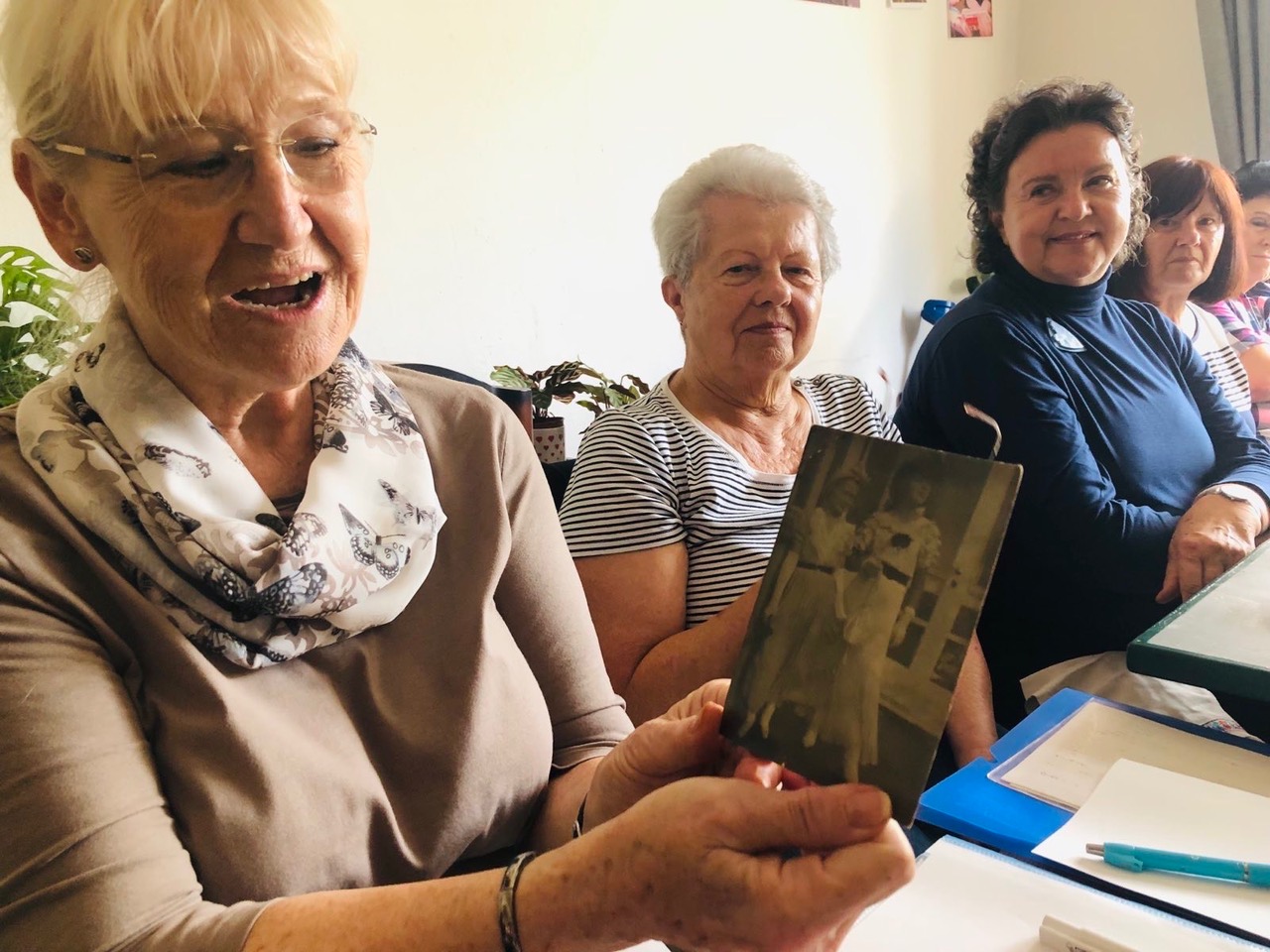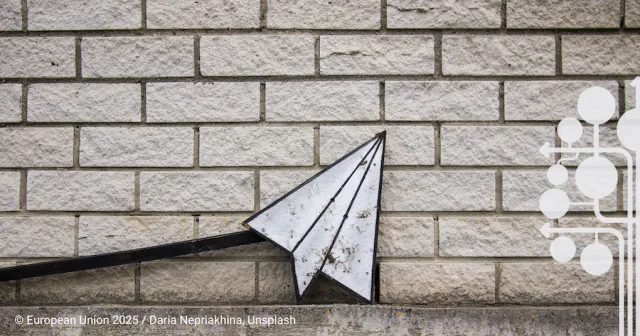Fostering social participation among senior citizens and making it visible
"Everyone has something to give, and everyone can contribute to the community – age has nothing to do with it."
Older people and the very old are often “invisible” within society today. They have left the workforce, they aren’t out and about as much, and they’re underrepresented in the media as well. The older a person becomes, the less he or she is expected to contribute to society and to participate in society in a meaningful way.
Through our projects, we seek to foster the understanding that older people, with their diverse interests, abilities, and talents, can play an active and self-determined role in society. Together with partners from different countries, with varied professional backgrounds and personal approaches, we have developed and realised projects in recent years that expand the scope of action and the opportunities for participation among older and very old people and that provide support for them to live as long as possible in an independent, healthy, safe, and familiar environment. Through our work, we aim to contribute not only to the (self-)empowerment of older women and men, but to the age(-ing)-appropriate design of the social and the physical environments as well.
Why do we believe that older people should (re)discover their “talents”, connect with others, and work together to shape their environment and their communities? Here are a few select facts:
We’re living longer.
On 1 January 2019, one in five residents of the European Union was aged 65 or over. By 2100, about one third of all Europeans will be 65+. [1] The group consisting of the very old (80 years and older) is growing faster than any other age group. Between 2019 and 2100, the proportion of people in the European Union aged 80+ will climb from 5.8 to 14.6 per cent[2].
Many of us would like to grow old at home.
“Ageing in place” means spending the life stage of old age at home, in familiar surroundings – and doing so as independently as possible. This concept not only cuts costs by reducing the need for care facilities, it also makes people happier. Both political leaders and older people themselves prefer this way of life because it is associated with relationships, continuity, social connectedness, as well as security and familiarity. The home is a place of retreat, the community a valuable resource.[3]
Belonging and social cohesion are vital resources.
When belonging and cohesion in the community are valued and nurtured, they become a precious resource in old age. They enhance the quality of life in old age[4], promote health[5], and prevent and alleviate loneliness while prolonging life[6].
Two projects – two different approaches to fostering social participation among older people
invisible talents
“Thank you for asking about talents. That’s normally something no one is interested in.
Now that I’m talking about it, I just realised how much I like that.”
Participant in the Netherlands
Objectives and target groups
The Erasmus+ project invisible talents (October 2018–September 2020) was aimed at supporting older people in (re)discovering their talents and sharing them with others, while inspiring key individuals and organisations to open up space for these talents.
Through this project, we primarily addressed employees and volunteers from health and social service providers and civic initiatives working actively with and for older people. In five partner countries (Austria, Germany, Lithuania, the Netherlands, and Italy), project teams worked with organisations and communities to initiate and implement “little activities” intended to increase the visibility of and appreciation for older people. A wide variety of activities have been developed, ranging from one-off interventions to longer-term cooperation projects with older people and an organisation’s staff:
Small steps – big impact: results from the invisible talents project

Dream Factory participant shows her dream collage, © Caro Bonink
The Dream Factory workshop series was created in the Modestraat cultural and community centre in Amsterdam, during which the older participants explored their aspirations and dreams and visualised them through a variety of activities. Our partners in Germany, Italy, and Lithuania collaborated with staff and older people in senior clubs and senior residences to develop ideas on how to focus more attention on the talents of older people in the institutions. In the spring of 2020, when COVID-19 brought every form of public life and communal activity to a standstill, older people found themselves confronted with the image of the “vulnerable high-risk group” on a massive scale. To counter that image and other discriminatory stereotypes, queraum launched the video series “Daheimbleiben für Fortgeschrittene” (Staying Home for Advanced Learners). In videos, older and very old people reveal their zest for life and sense of humour and illustrate how – with creativity and joie de vivre – people can have a good time at home too.
Dreamlike Neighbourhood
“I want to help others wherever possible, but I also want to help myself.
I want to savour life and not waste it.”
Participant from the Czech Republic
Objectives and target groups
In the Erasmus+ project Dreamlike Neighbourhood (December 2020–November 2022), we support neighbourhood groups of older and very old people. They meet regularly in these groups, get to know each other (in a different way), and build each other up. Together they form a support network that helps them meet the challenges of daily life, and they play an active role in transforming neighbourhoods.
“Because together it’s more fun”: Implementation and experiences thus far
“It is great to see how the participants have grown and developed.
The participants have bonded with each other and are curious about
new things in the neighbourhood and about each other.”
Project partner from the Netherlands

Storytelling Café in Prague, © Letokruh, z.ú., Czech Republic
In recent months, senior citizens’ groups have been established in the partner countries (Czech Republic, Slovenia, Netherlands, and Austria). During regular “chats” on a variety of topics (such as childhood memories and travel) in a Viennese pensioners’ club, group members hear about, see, and appreciate commonalities, differing perspectives, and personal experiences. The Letokruh neighbourhood group in Prague explores different parts of the city, discovering new things in their own neighbourhoods and contributing their perspectives in discussions with urban planners and other experts. Participants in AFEdemy’s neighbourhood groups in The Hague organise each of their meetings according to their interests and talents. Self-penned poems and drawings are just as much a part of the discussion as health-related topics and personal concerns. The Third Age University’s neighbourhood group in Ljubljana addresses the age(-ing)-friendly design of the public space and was invited to create a video for the City65+: Between recreation and urbanity exhibition.
Overall, the meetings provide a useful framework for getting to know other people, discussing various aspects of good neighbourliness, and experimenting with creative methods and formats that encourage togetherness.

Info box: Publications and links
The fact sheet, the handbook, the compilation of methods, and the video series “Daheimbleiben für Fortgeschrittene” (Staying Home for Advanced Learners) can be found on the invisible talents project website:
You can find further information and a fact sheet on the Dreamlike Neighbourhood project here:
www.dreamlike-neighbourhood.eu
A handbook and a compilation of methods will be published in the summer of 2022.
Further projects by the queraum team are outlined on the website: www.queraum.org
Footnotes:
[1] https://ec.europa.eu/eurostat/statistics-explained/index.php/Population… and_ageing#The_share_of_elderly_people_ continues_to_increase
[2] https://ec.europa.eu/eurostat/statistics-explained/index.php/Population… and_ageing#The_share_of_
[3] Janine L. Wiles et al.: The Meaning of Ageing in Place to Older People, in: The Gerontologist. Vol. 52, Issue 3, June 2012, 357–366.
[4] Gert Lang et al.: Determinanten der Lebensqualität älterer Frauen: Zum Stellenwert der wahrgenommenen Sicherheit und Eingebundenheit, in: SWS-Rundschau, 53, 2013.
[5] See for instance: Oliver Hämmig: Soziale Beziehungen und Gesundheit im Kanton Zürich, in: Gesundheitsberichterstattung (Epidemiology, Biostatistics and Prevention Institute, University of Zurich), 2016.
[6] Julianne Holt-Lundstad et al.: Social Relationships and Mortality Risk: A Metaanalytic Review, in: PLoS Medicine 7/7, 1–10.
The authors of this article:
Anita Rappauer is a sociologist and has been working at queraum. kultur- und sozialforschung since 2006. In recent years, she has developed and implemented a number of Erasmus+ projects focusing on social participation for older people together with colleagues and partner organisations from all over Europe.
Contact: rappauer@queraum.org
Susanne Dobner is a research associate at queraum. kultur- und sozialforschung and has been working on national and European projects since 2019. Her work focuses on participation and social inclusion for older people, age(-ing)-appropriate urban development, active mobility, and health promotion.
Contact: dobner@queraum.org
About this article:
This article is based on an idea and networking pool from the EPALE and Erasmus+ Conference 2022: Life Skills as a Focus of Adult Education, during which the projects invisible talents and Dreamlike Neighbourhood were presented by the authors of this article.




